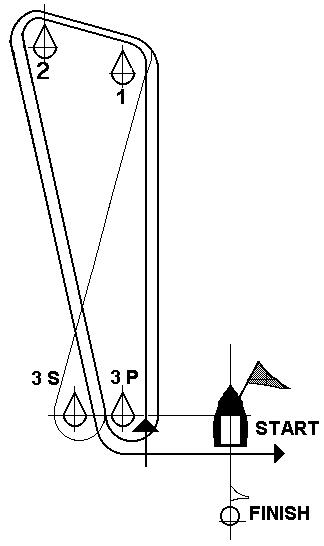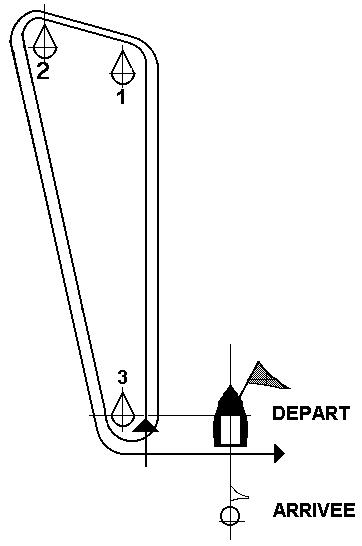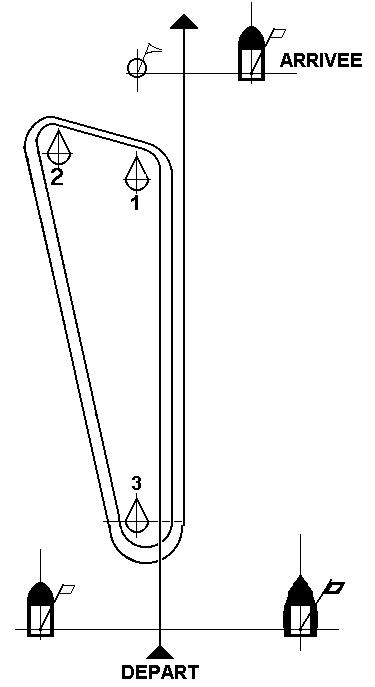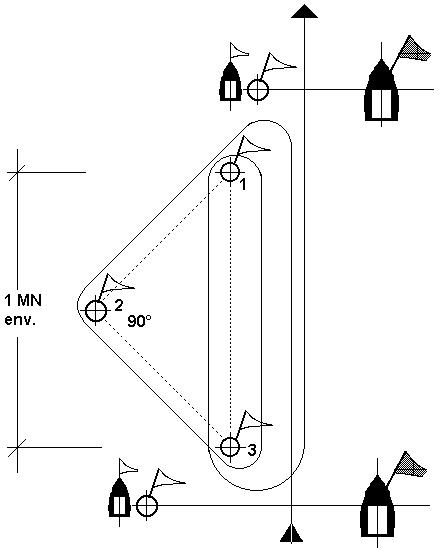A regatta is a speed race between several boats on a closed course. There are two main categories of sailing regattas: the “fleet regatta”, the most common, and the “match racing”, where only two boats compete. We will not deal with the latter.
The term regatta is semantically imprecise because it can refer (as the dictionary does) to a single isolated race (i.e., the period when a boat is racing as defined in the RRS) or to a set of races sailed in a continuous period (a day, a weekend, etc.). If the period is discontinuous, according to the RRS [see RRS A9], it is a series.
The regatta may take place on a closed (or constructed) course. The finish area is close to the start area, and the number of upwind legs is (ideally) equal to the number of downwind legs. It can also take place on an open course (raid over several races). The number of upwind and downwind races is balanced. [cf : Guide de la régate Intersérie]
Long distance offshore competitions are not designated as regattas but as offshore races.
Course #
The most commonly used course is called the “banana course”: it consists of a starting line perpendicular to the wind (i.e., the start is upwind, and requires sailing) and a buoy in line with the wind. A five-minute countdown is given and then the boats start on top.
They must then go around the windward buoy, leaving it to port, and then eventually a “dog leg” buoy.
The boats complete a specified number of laps before crossing the finish line.
There are many other courses such as the “coastal” course (a large course delimited by natural obstacles or navigation buoys), the “trapeze” course or the “Olympic” course etc.

Banana course with 2 leeward buoys and crosswind finish

Banana course with 1 leeward buoy and beam finish

Banana course with 1 leeward buoy and upwind finish

Olympic Triangle
Regatta Grades #
The purpose of the grading is to determine a hierarchy of competitions according to their degree of sporting value (level of participants, notoriety and size of the competition).
The most common level in our sailing clubs is grade 5.
Les différents grades sont:
L’Extra Grade est un grade dit « événementiel » composé des compétitions de prestige organisées en France.
Il rassemble les évènements majeurs en » Voile et Aventure », en « Volves classiques » et » Voiliers de Tradition » en flotte et en solitaire, en Voile Olympique, Voile légère, Habitable et Match Racing.
Chaque compétition de l’Extra Grade se verra attribuer un grade sportif allant de W à 3.
Les compétitions de Grades 5A, 5B et 5C comprennent les compétitions dédiées aux couleurs de clubs, des coureurs d’un ou plusieurs départements ou bassins et d’une ou plusieurs Ligues dont le niveau sportif est inférieur au grade 4, en Voile Légère, Match Racing et Habitable (incluant la Voie de Tradition).
Les compétitions de Grades 5 doivent permettre la promotion de la pratique compétitive conviviale, du plan local au plan régional, en Voile Légère, Habitable (incluant la Voile de Tradition) et Match Racing.
En résumé :
- Grade 5C : pour les marins du Club mais ouvert à tous
- Grade 5B : Département
- Grade 5A : Ligue (Région)
